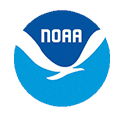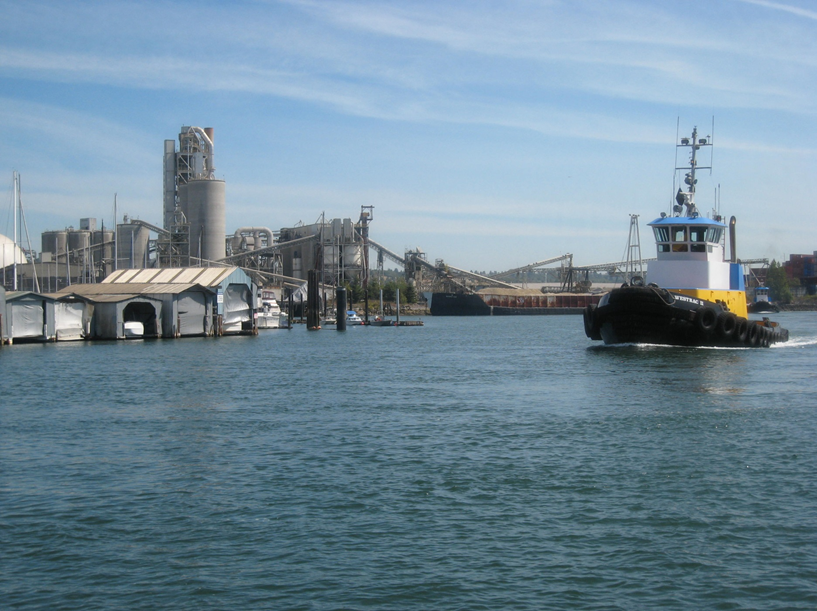Lower Duwamish River
Hazardous Waste Site | Washington State | Mid-20th Century
What Happened?
The Duwamish River was once a wide, meandering river with large areas of mudflats and marshes. By the 1940s, channelization and filling had transformed the 9-mile estuary into a 7-mile industrial waterway. This process destroyed 97 percent of the original habitat.
The lower Duwamish River is still highly developed, with many industrial and commercial facilities lining its banks. Hazardous substances have been released since the early 1900s, resulting in injuries to fish, birds, wildlife, and their habitats.
What Were the Impacts?
We are currently assessing impacts to:
- Wildlife, including fish, birds, mammals.
- Water and sediment.
- Recreational uses, including fishing.
What’s Happening Now?
Cleanup of the Lower Duwamish River has begun, and will continue for many years. But cleanup alone will not restore the salmon and other resources that have been impacted by past contamination. In order to restore these injured resources, additional habitat must be restored. This is especially true for the survival and recovery of threatened fish species, including the Puget Sound Chinook salmon and Puget Sound Steelhead. The young of these species spend time in this part of the Duwamish River as they transition from freshwater to saltwater.
In 2013, the trustees completed a final Restoration Plan (PDF, 124 pg). In 2014, as part of a NRDA settlement, the Boeing Company constructed one of the largest restoration projects on the Lower Duwamish River—almost five acres of mudflat, marsh, and riparian vegetation, providing habitat for fish and wildlife. The company Bluefield Holdings, Inc. has also completed a restoration project and plans to sell credits derived from the project to potentially responsible parties to address injuries to natural resources. We are planning additional projects to restore mudflats, marshes, and shoreline vegetation on the river. In 2016 a workshop report was published regarding habitat lessons learned on the Lower Duwamish River (PDF, 37 pg).
On June 25, 2019 the co-trustees released the Lower Duwamish Final Injury Assessment Plan. The plan describes the Trustees’ current understanding of the Lower Duwamish River and natural resources found in the area, as well as ways to study the effects of contamination on natural resources.The release of this plan is an important accomplishment in NOAA’s ongoing work to assess the injuries from contamination in the Lower Duwamish River.
In May 2021 a settlement with the City of Seattle valued at $3.9 million, and a restoration plan were finalized and released. The restoration plan (PDF, 30 pages) calls for the Trustees to accept restoration credits from an existing habitat restoration project developed by Bluefield Holdings, Inc. that restored approximately one acre of riparian, marsh, mudflat, and subtidal habitats along the West Waterway of the River. A draft settlement and restoration plan were released for public comment in December 2020.
In June 2021 a settlement with Vigor Industrial, LLC and Exxon Mobil Corp. valued at $48.4 million was finalized to partially fund natural resource restoration, and a final restoration plan were released. The restoration plan (PDF, 38 pages) selects preferred projects that will restore more than 3 acres of different estuary habitats, including marsh, channels, and tidal areas in the river. The work will include removal of almost 6,000 creosote treated pilings, and 2.74 acres of overwater structures, like docks and piers, to create more natural habitat. The draft settlement and restoration plan were released for public comment in January 2021.
In April 2023, a settlement with Lynden, Inc. and others was finalized, resolving their liability for injuries to natural resources harmed by pollution. The settlement will provide funds for restoration of habitat for juvenile salmon, other fish, migratory birds, and other wildlife injured by releases of hazardous substances from commercial facilities on the banks of the Lower Duwamish River.
In January 2024, a new storymap was created by NOAA and the Elliott Bay Trustee Council. The storymap provides a visual journey of the Lower Duwamish River and the restoration work that is underway in this important urban river.
On March 12, 2024, a settlement with General Recycling was proposed to resolve their liability for injuries to natural resources harmed by pollution. As part of the settlement, the companies will construct and maintain a habitat restoration project at the General Recycling facility, located on the west bank of the Lower Duwamish River in a high-priority, industrialized area of the river. It will include nearly three acres of shoreline and aquatic habitat that will provide refuge areas and food sources for wildlife and various fish species, including juvenile salmon migrating from upriver spawning areas. The settlement is subject to a 30-day public comment period open until April 17th, 2024, and final court approval.
On May 13, 2024, a settlement was finalized with Crowley, 8th Avenue Terminals, Inc. and the Washington State Department of Transportation (WSDOT). The settlement will resolve the liability of the parties for injuries to natural resources from hazardous waste pollution, as well as the cost of assessing those injuries.
On July 15, 2024, the United States District Court for the Western District of Washington finalized a settlement with General Recycling and two affiliates valued at over $23 million. The proposed habitat restoration project is outlined in the Final Restoration Plan and Environmental Assessment (PDF, 38 pages).
In summer 2025, General Recycling of Washington (General Recycling) began construction of a 2.8-acre restoration project along the Lower Duwamish River to restore habitat for Chinook salmon, shorebirds, and other wildlife. Read more about the project here.
Stay Up To Date
Sign up for the Trustee Council's newsletter to get regular updates on our work. Enter your email address, then check the box next to “Lower Duwamish River Restoration” under the West Coast Updates heading.
Contacts
Kaitlin Lieb
NOAA Office of Response and Restoration
Seattle, WA 98115
kaitlin.lieb@noaa.gov









